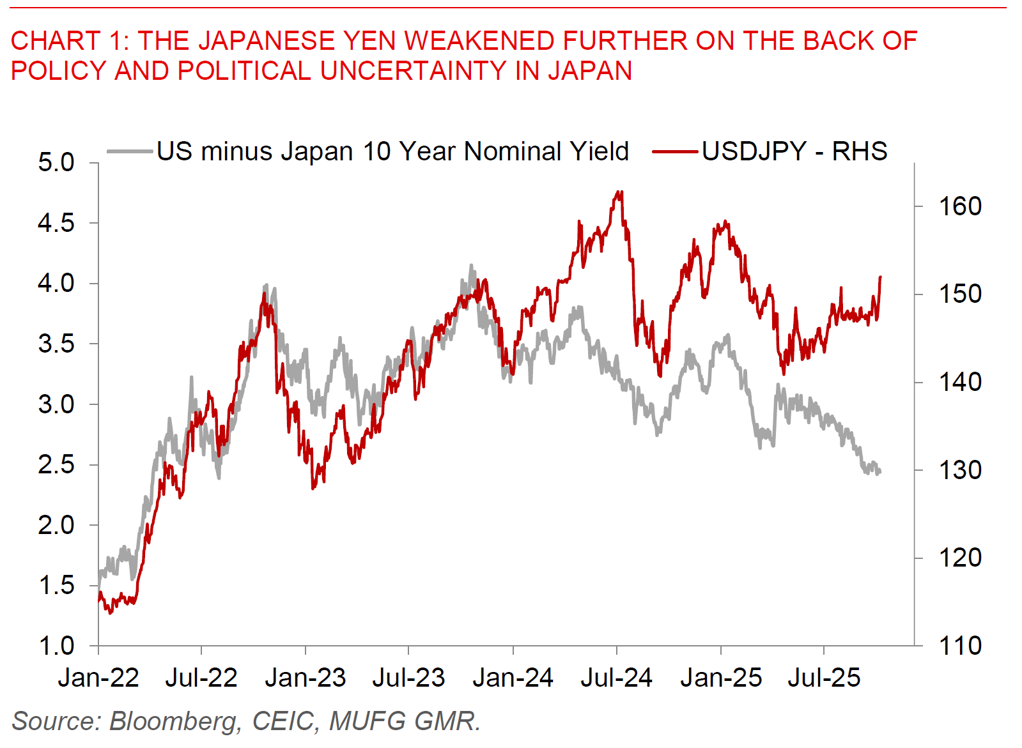Ahead Today
G3: Germany industrial production
Asia: Bank of Thailand monetary policy, Taiwan CPI
Market Highlights
The Japanese Yen continued to weaken and underperform, with USD/JPY rising above the 152 level during the Asia trading session, on the back of the recent win in the LDP Presidential election by Sanae Takaichi, somewhat softer wage data, coupled with uncertainty around coalition political dynamics in Japan. Japan’s ruling party LDP attempted to quell some concerns potentially brewing within its long-standing coalition with junior party Komeito, with local media reporting that some within Komeito are considering leaving the coalition citing worries over Takaichi’s perceived right-wing stance. Meanwhile, Asahi news reported Takaichi is seen seeking cooperation on a potential expansion of the government coalition in part to push through her fiscal priorities, and that she has held talks with Democratic Party for the people Yuichiro Tamaki on 5 Oct, a report which was subsequently denied by Tamaki. It’s unclear how the political dynamics will play out from here, and whether the extraordinary diet session to be held on 15 Oct to confirm Takaichi’s Premiership will be delayed. All these political uncertainties are one key reason for JPY selling, and together with the potential policy shift towards modest fiscal expansion and delayed rate hikes.

The JPY rates markets have now priced out a Bank of Japan rate hikes for this calendar year, and now see the next hike possibly only coming in March 2026. This together somewhat softer wage growth data released today, coupled with pushback from Takaichi-san’s economic advisors on a near-term rate hike at least until the December or January meeting are not helping the case for a JPY rebound at least in the very near-term.
The Philippines released its inflation data yesterday, which came in softer than expected at 1.7%yoy (vs consensus expectations of 1.9%yoy rise). We think that the BSP will likely pause in its meeting in October tomorrow (9 Oct), but should have space to cut rates once more in its December meeting given still soft inflationary pressures. The path next year for the BSP is partially clouded by recent moves by the government to extend bans of rice imports, but with government spending likely slowing due to recent flood projects corruption cases, and growth still below potential, we think the balance of risks still tilts towards at least one more cut in 2026. We are forecasting the BSP to bring its policy rate down to 4.50% by 2Q2026.
Meanwhile, markets in Asia will also focus on new Bank of Thailand Governor Vitai Ratanakorn’s first focus monetary policy meeting decision. We expect the BOT to cut the one-day repurchase rate by 25bps to 1.25%, reflecting growing concerns over Thailand’s prolonged economic slowdown. A rate cut could signal new BOT Governor Vitai’s dovish leanings, and markets will look closely at the comments and statements to clean clues as such (see Asia FX Weekly – BOT cut in sight, BSP to hold steady).
